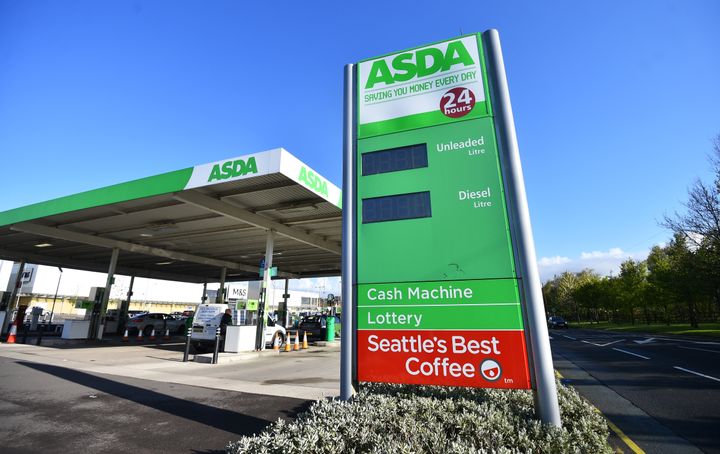
Fuel prices have crept up once again, meaning drivers started paying an extra 6p per litre last year.
While fuel was one of the first expenses to soar in price in the run-up to Russia’s invasion of Ukraine – which meant Europe started to wean itself off Moscow’s cheap, exported fossil fuels – it did then start declining in price even as the cost of living crisis squeezed budgets in other ways.
But a watchdog has now confirmed that it’s still much higher than in price than it was before the pandemic, particularly at supermarkets.
Unleaded petrol at the supermarket now costs on average 141.14p per litre while diesel costs 142.87p according to RAC.
That’s higher than pre-pandemic levels, although still lower than the last July.
Here’s what you need to know about the rising price of fuel.
Why is fuel now more expensive at supermarkets?
The Competition and Markets Authority (CMA) said weak competition allows supermarkets to bump up their prices.
Drivers were paying 6p more per litre in 2022 compared to 2019 – which worked out to around ”£900 million” extra for people using supermarkets, according to the watchdog.
And just between January 2023 and the end of May 2023, drivers had to pay an extra 13p per litre for diesel.
So what’s brought on this change?
Well, Asda is usually the cheapest of the supermarkets. It helped “anchor” prices down in the past, according to the CMA, meaning its competitors couldn’t increase their own prices too much in case they lost customers to Asda.
But, according to CMA, Asda and Morrisons then made the decision to target higher margins this year.
Asda’s fuel margin target in 2023 was more than three times higher what it was in 2019, and Morrisons doubled their own target for the same period.
Then, Sainsbury’s and Tesco “did not respond in the way you would expect in a competitive market and instead raised their prices in line with these changes”.
All four supermarkets were therefore charging more for petrol.
This change is “nothing short of astounding”, according to the RAC’s spokesman, Simon Williams. He said this confirms “supermarkets haven’t been treating drivers fairly at the pumps”.
CMA chief Sarah Cardell told the BBC: “This will have had a great impact on vulnerable people, particularly those in areas with less choice of fuel station.”
She called for action to change.
Why were supermarkets known for cheaper fuel?
Motorway service stations typically charge around 20p per litre more for petrol and 15p per litre more for diesel compared to other stations, so supermarkets are generally the cheapest.
Geography can have an impact, too. Fuel retailers are likely to have higher costs and prices are likely to be higher in rural areas where supermarkets are few and far between.
What happens next?
The CMA is calling for a new fuel finder scheme so drivers can compare station-by-station fuel prices live on their devices.
This could be implemented via law with a new “fuel monitor” oversight body.
It’s the kind of change the AA have been trying to implement for more than a decade – and they say it needs to be in place by the end of the year.
Right now, you can only find individual forecourt prices once you get to petrol station.
Grant Shapps, energy security secretary, said this would help “shine a light on rip-off retailers”, and bring down prices.
“The fuel monitor would monitor prices and margins on an ongoing basis and recommend further action if competition continues to weaken in the market,” the CMA said.
“As the UK transitions to net-zero the demand for petrol and diesel will reduce. The fuel monitor will help us understand the impact of this on vulnerable consumers that remain dependent on petrol and diesel for longer, as well as those living in areas with limited choice of fuel stations.
“With greater transparency and shopping around as effectively as possible, the driver of a typical family car could save up to £4.50 a tank within a five-minute drive.”
